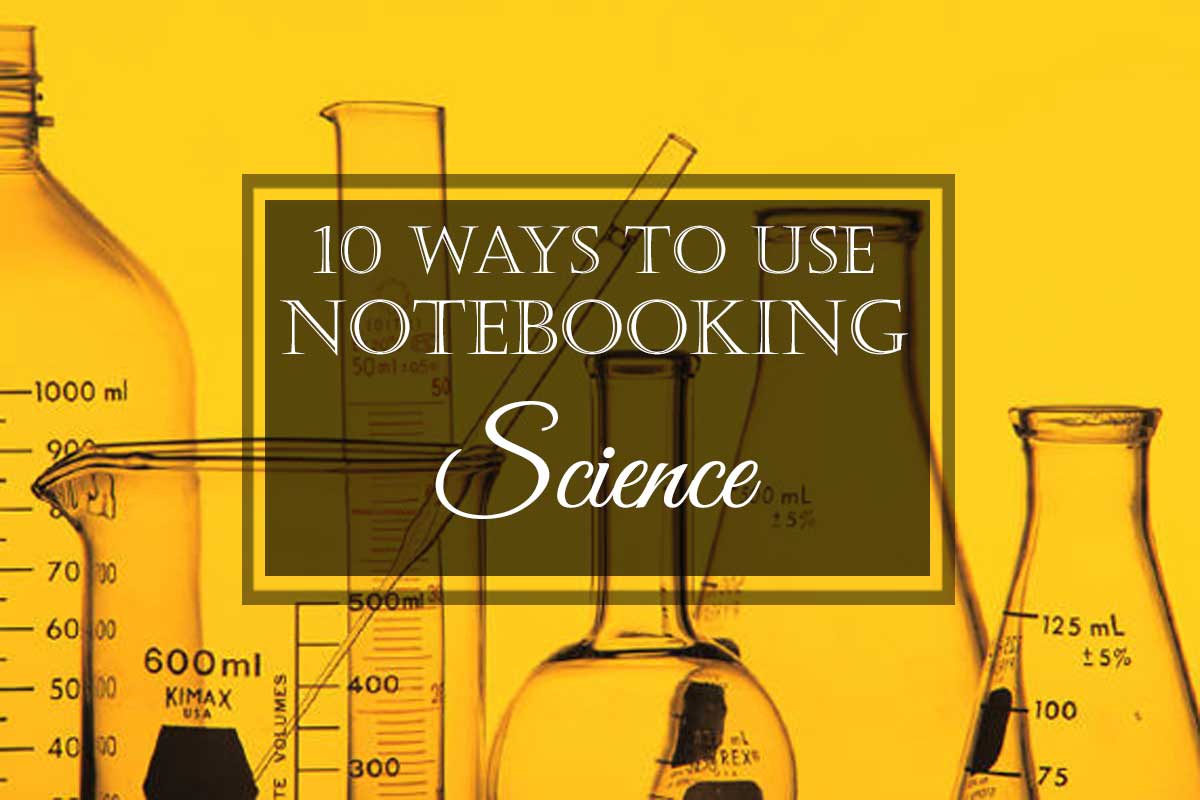
Science! We love it! And a notebook is indispensable for anyone with a science interest. Most scientists of note kept notebooks — Edison, Alexander Graham Bell, da Vinci, Marconi, and even van Leeuwenhoek, who although he was known for his casual methods, described his observations in over 200 letters.
Science notebooks will grow with your child from the first early sketches of observations or copies of diagrams to experiments cataloged using the scientific method, and then to observations, experiments, inventions, diagrams, and other records made when he becomes a scientist himself!
Suggestions (helpful resources below)
- Begin with a simple science notebook filled with Drawing & Writing paper. This will allow your child to copy science-related diagrams or illustrations and then narrate a description below.
- Once your child is old enough to experiment (and most children are) incorporate forms that focus on the scientific method (see resources below). These can be relatively simple — no need to overwhelm. We want to keep this fun and interesting, not burdensome, so that we foster and encourage that investigative spirit!
- Older students can begin using more detailed scientific method forms. They can copy illustrations and diagrams on Drawing & Writing paper as they come across them in living science books, writing narrations of procedures, meanings, and explanations.
- Biographies can be added to a science notebook (and yes, there may be some overlap with history here).
- What was the scientist’s contribution?
- Describe his work ethic.
- What methods did he use?
- How did he document his research?
Hopefully at some point your student will be ready to conduct his own science-related, self-initiated research. A science notebook is a must.
- How can you correct an error if you didn’t document the error in the first place?
- How will you know what steps to take next if you haven’t recorded where you have been?
- How can you show your results to others if you did not record them?
A Few General Tips
- Scientists date things. Observations, experiments, or other events need to be recorded with a date.
- Scientists draw things. They sketch their observations, or projects they are working on.
- Scientists work systematically. Follow or create a step-by-step plan. Write the plan down. Check off each step as it is completed. This allows others to follow your work — and it helps keep you on track!
- Scientists record questions. They may not yet have the answers. It may not yet be time to test a theory. However, they do know the questions that should be asked.
- Scientists record data. Measurements, record keeping, tracking info — all results are recorded. This is raw data — never to be manipulated or discarded or fit to a predetermined result. It is what it is, and we have to work from there.
Additional Resources
Science Notebook Entry Types
What can be included? Here is a list of ideas from the Washington State LASER.
Science and Engineering Project Laboratory Notebooks
Great help for the older student at ScienceBuddies.org.
FOSS Science Notebooks Folio
This 36-page download at the University of California includes an incredible wealth of information on why to use a science notebook, how to use it, examples of the items that can be documented and included, and many, many examples of each. Great resource!
Science Notebooks in K–2
More from FOSS.
Science Notebooks in 3–5
Still more.
Science Notebook Essentials
More from Eastern Illinois University.
Science Notebooks: Teacher Support
From McGraw Hill.
FieldSTEM Science Notebooks
Tips from the Pacific Education Institute.
Science
Tons of other resources including free eBooks.
Notebooking
The basics.
Activities
4 Favorite Science Suppliers
Our favorite places to find resources that encourage scientific observation.
Books
Grammar Stage Science Book List
Living science books for the younger set at Paula’s Archives.
Readable Science: An Incomplete Book List
List at PennyGardner.com covering biographies, physical science and biology selections. (Please read the notes at the bottom to help you find books to fit your family.)

Books Children Love by Elizabeth Wilson
Book of books that includes a “Nature, Science and Technology” section with many titles to choose from. Read our entire review.
Unit Studies

Free Science Studies: Great Inventors & Their Inventions
Biography-based spine with helps.
Printables & Notebooking Pages

Drawing & Writing Notebooking Paper {Free Download}
For copying diagrams or drawing illustrations and describing their meaning below.
Scientific Drawing
Free page for drawing, labeling, and describing from Highland Heritage.
Science Experiment Notebooking Pages
Free download that includes the scientific method and pages for drawing or journaling results.
Collection of Science Notebooking Pages
Drawing, notetaking, and scientific method included.
Scientist Notebooking Pages
Nice 4-page collection for recording biographies of scientists at NotebookingFairy.com.
Using the Scientific Method Science Experiment Form
Another option.
Scientific Drawing
Form from Highland Heritage Home School.
Science Lab Sheet
Also from Highland Heritage Home School.
Enjoy the entire series:











You must be logged in to post a comment.